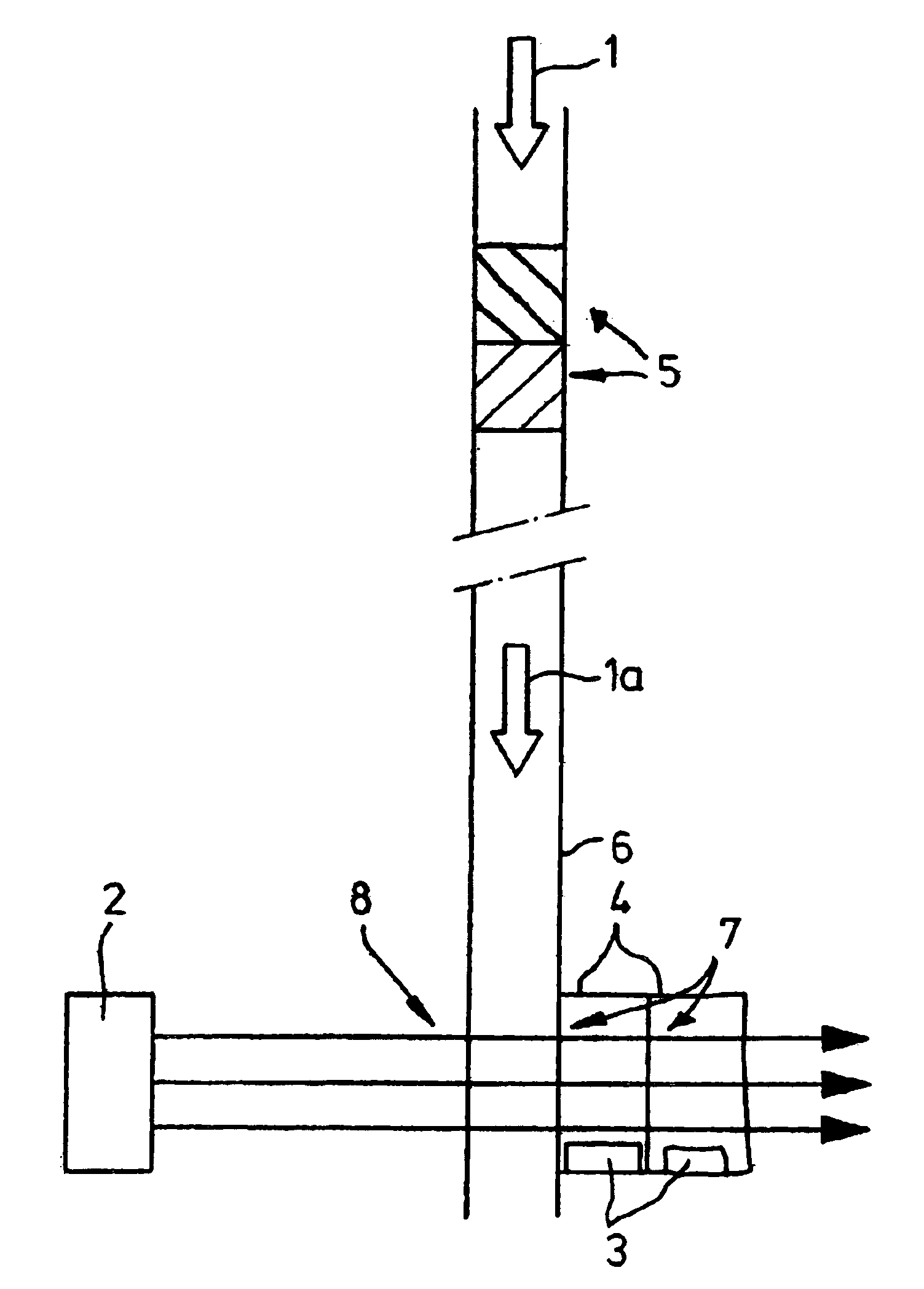Device and method for testing a material
- Summary
- Abstract
- Description
- Claims
- Application Information
AI Technical Summary
Benefits of technology
Problems solved by technology
Method used
Image
Examples
Embodiment Construction
[0029]FIG. 1 schematically shows an arrangement of components of an exemplary device according to the present invention. A gas mixture 1 flows through a tube 6. A material sample 5 is positioned inside tube 6. A measuring region 8 is provided behind material sample 5 in the flow direction, with, among other things, a chamber 4 filled with a reference gas 7 being positioned on tube 6. Both chamber 4 and tube 6 are configured to be transparent in the region of chamber 4 to infrared radiation from an infrared source 2.
[0030]Material sample 5 converts gas mixture 1 into a product mixture 1a, so that product mixture 1a may include a substance to be produced or a desired substance. Product mixture 1a absorbs at least a part of the radiation from IR source 2.
[0031]Alternatively, using a needle element, product mixture 1a may also be drawn off from a reactor, which may include material sample 5, and supplied to measuring region 8.
[0032]If product mixture 1a does not contain any substance to...
PUM
 Login to View More
Login to View More Abstract
Description
Claims
Application Information
 Login to View More
Login to View More - R&D
- Intellectual Property
- Life Sciences
- Materials
- Tech Scout
- Unparalleled Data Quality
- Higher Quality Content
- 60% Fewer Hallucinations
Browse by: Latest US Patents, China's latest patents, Technical Efficacy Thesaurus, Application Domain, Technology Topic, Popular Technical Reports.
© 2025 PatSnap. All rights reserved.Legal|Privacy policy|Modern Slavery Act Transparency Statement|Sitemap|About US| Contact US: help@patsnap.com


